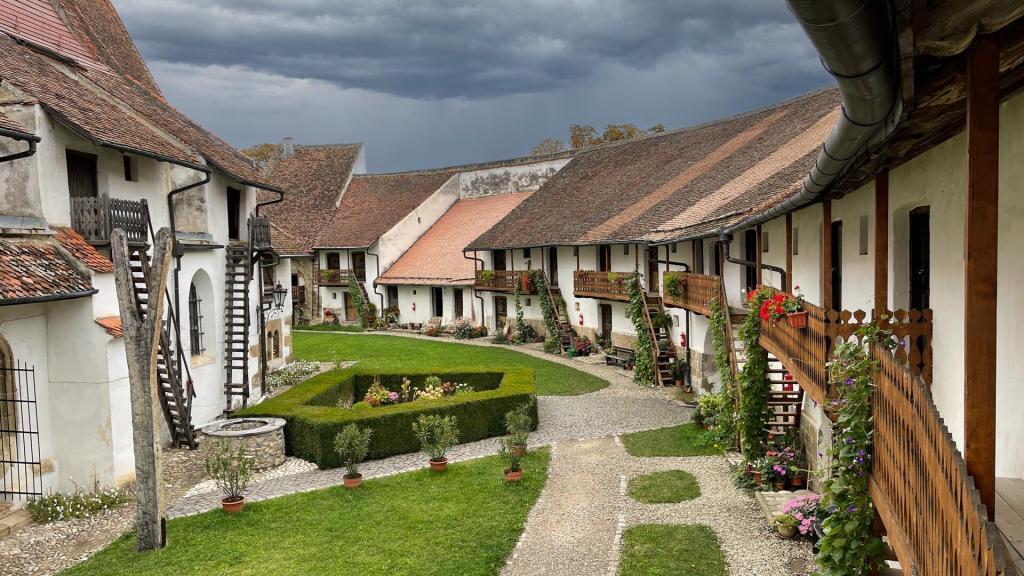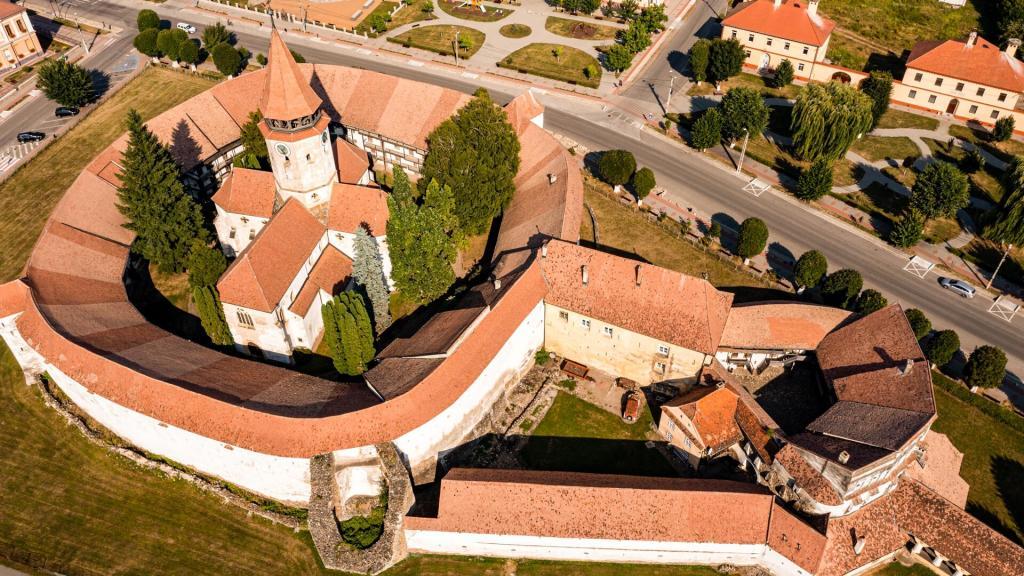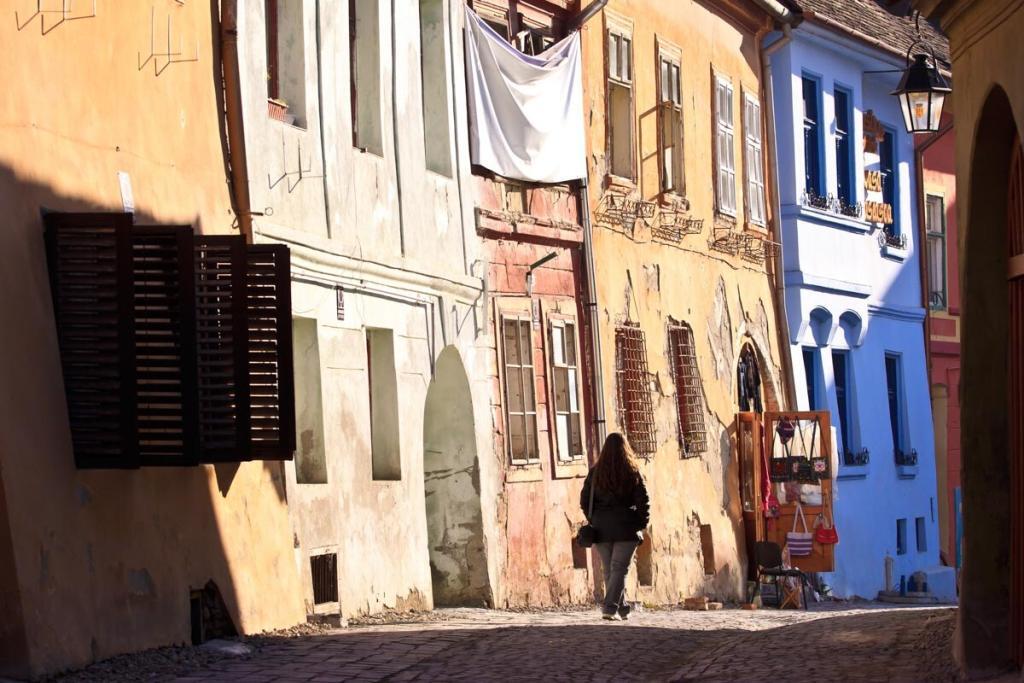After all those years we’ve been to Sibiu, we finally got a guided tour with a real expert, Adela Dadu. She was brilliantly passionate in advocating for the uniqueness of the tolerant spirit of Saxons. We got a lot of information about Saxons, the history of the Sibiu, the trade happening with Romanian population, the houses, the amazing Samuel von Brukenthal and much more. It was really informative and exciting.
In the afternoon we visited Michael Henning, the painted terracotta tiles master who lives in Cisnadioara – 20 minutes from Sibiu. He is famous for creating amazingly beautiful tiles that are used for building tiled stoves. He is one of the few Saxons left in Cisnadioara (less than one hundred – out of more than 1200 in the early 90’s) and also, one of the last ones that specialises in this form of decoration. He creates the model in the clay – the clay itself being a special one he found, after many experiments, somewhere near Corund in the Szekely country; he waits for two months for the tile to dry, burns it, paints it by hand, glazes it; burns it again till it looks like delicate Chinese ceramic. One needs 150 such pieces to build a traditional tiled stove. And it takes weeks of meticulous work to do it right.
Historical information
The Transylvanian Saxons first appeared in Transylvania around middle 12th century and were of German origin from around Luxembuorg, Flanders – in general, from the north western part of the Holy Roman Empire. They were given territorial and self ruling rights by the King of Hungary – which was the ruler of Transylvania at that time. Their role was to defend the eastern part of the Empire against the invaders.
They founded numerous cities and villages – among them Brasov, Sibiu, Sighisoara, Medias – to name only the biggest, and created a unique German culture in the middle of Eastern Europe. Before the World War 2, there were approximately 200,000 Transylvanian Saxons in Romania. By 1989, only 95,000 still lived here. After Romanian Revolution in 1989, further 75,000 emigrated from Romania to Western Europe or USA. Nowadays, only several thousands are still living in the Saxon Country.

He has orders for the next two years but he works alone and he does everything by himself. I’ve asked him why he does not hire more people. “There are not enough people interested in this anymore. I’ve tried taking some young people to teach them, but they do not have patience. They are more of a nuisance than help”. And he does not need to sell more. He has a good life and does not want the stress of expanding his small business into a factory. His inspiration are the tiles of golden days masters – he has a great collection right in his storage area – old and new, next to each other.
He started at the end of 90s, when he noticed that there was virtually no-one left with the knowledge to build traditional stove tiles. He learned for years, reading, travelling to Germany to understand the German way of doing it (similar but not as good as the Transylvania’s Saxons did it), collecting old tiles, experimenting, failing and learning more, till he was finally happy with what he did. One of the stoves he was most proud of – done for an emigrated Saxon in Germany – was made with a mix of his tiles and century old tiles. He was finally as good, or better, than the old masters.
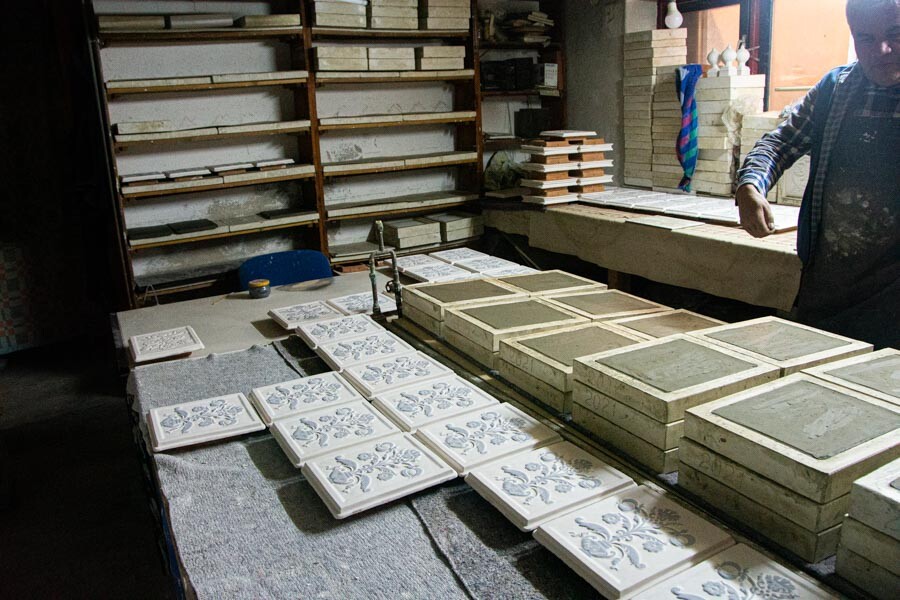
Wouldn’t have been able to do the same in Germany? Why didn’t he leave with the others? I’ve asked. In Germany, he would have been just a cog in a huge oiled mechanism. He wouldn’t have had the drive to do something like that. All the great craftspeople that left to go to Germany, lost their skills – manual tile making, wood working, blacksmithing are skills that make sense in a rural area that needs those skills and little sense in an over-industrialised country like Germany. They became cashiers, worked in auto shops, started from scratch in totally different domains.
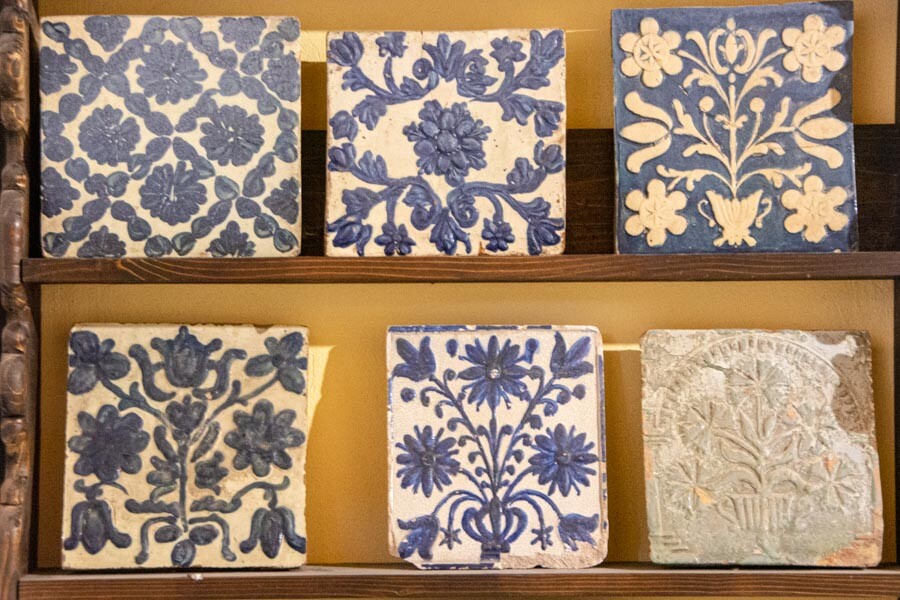
It is such a pity that so many skilled Saxons left and so few remained, so many skills lost, I commented. “I don’t understand you, guys” he said. “The real pity is the 5 million Romanians left. This is the real catastrophe, and not a couple of hundred thousand Saxons”. At which, I could only eat the last piece of a delicious Hanklich pie he treated us with, and changed the subject. Discussing the Saxon president of Romania, that just triggered (probably) a new wave of emigration, was something that I was not prepared to tackle. Too depressing.
We discussed some more about the tourists, local gastronomy and his daughters (of which he is amazingly proud – they did not leave the country but took his never-give-up attitude and stayed), we bought some beautiful tiles – they will be centerpieces in our newly started collection of new masters – and we left well after getting dark.
The 800 years old Cisnadioara fortified church, from the top of the hill, was superb, looking like an ideal ancient abbey to be used in a movie. It survived so many wars, plagues that razed cities, overlooked petty squabbles, great failures, catastrophes and amazing stories. This is just one more amazing story.

